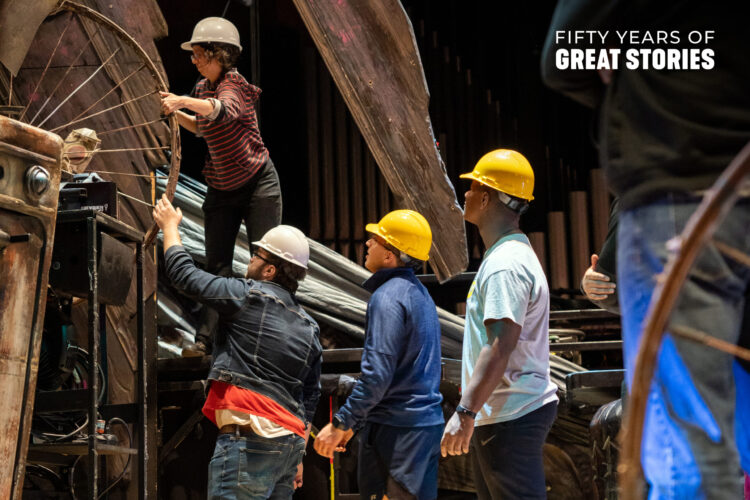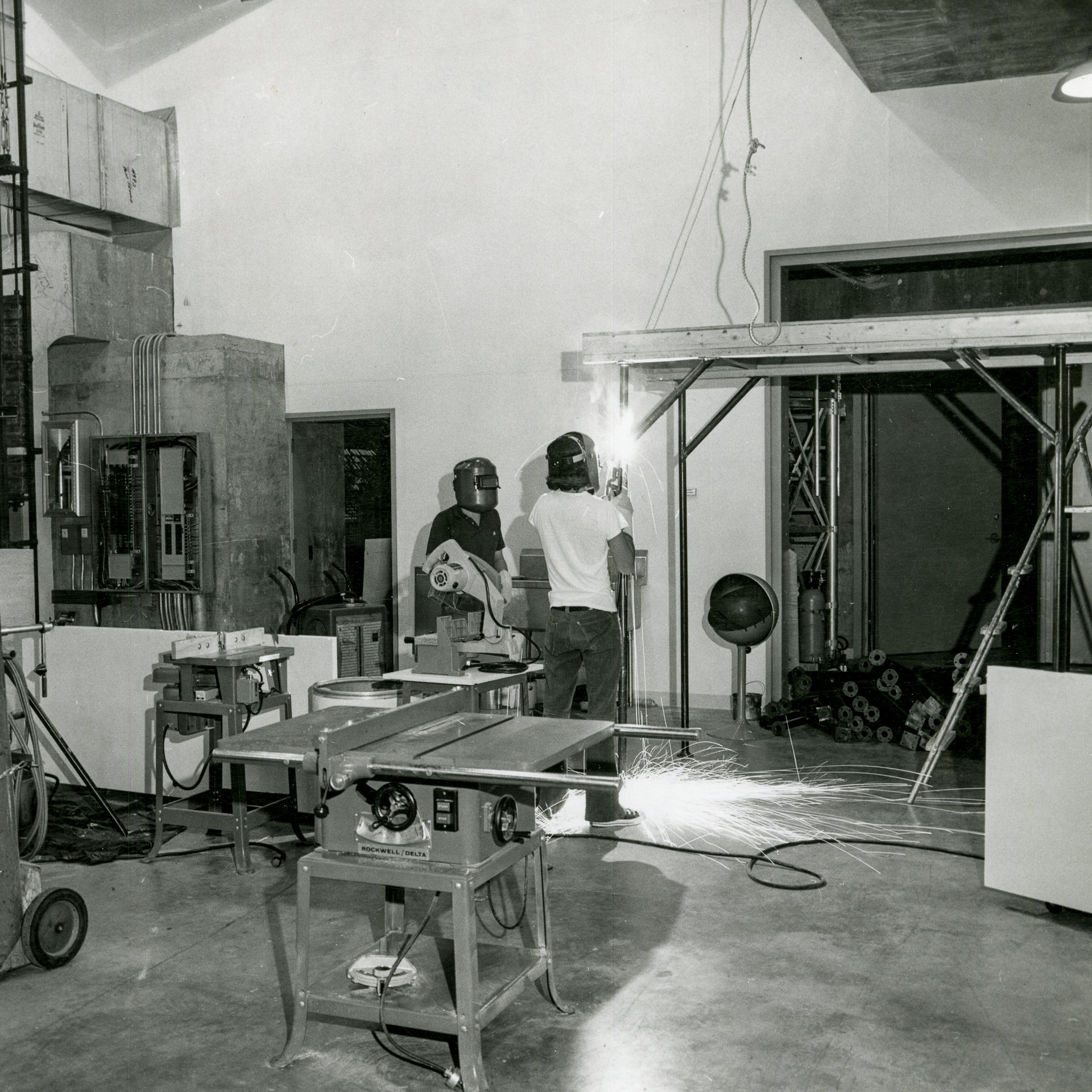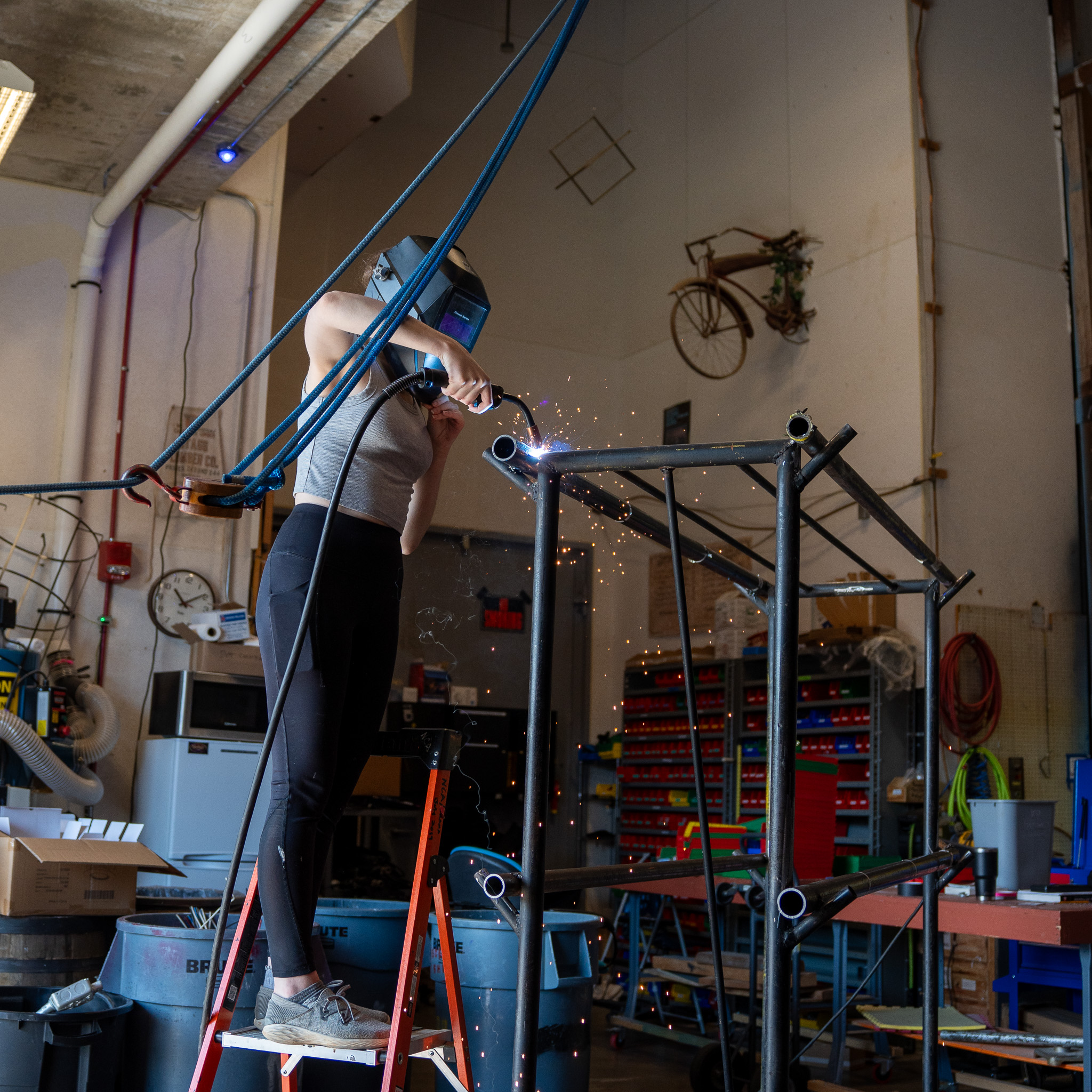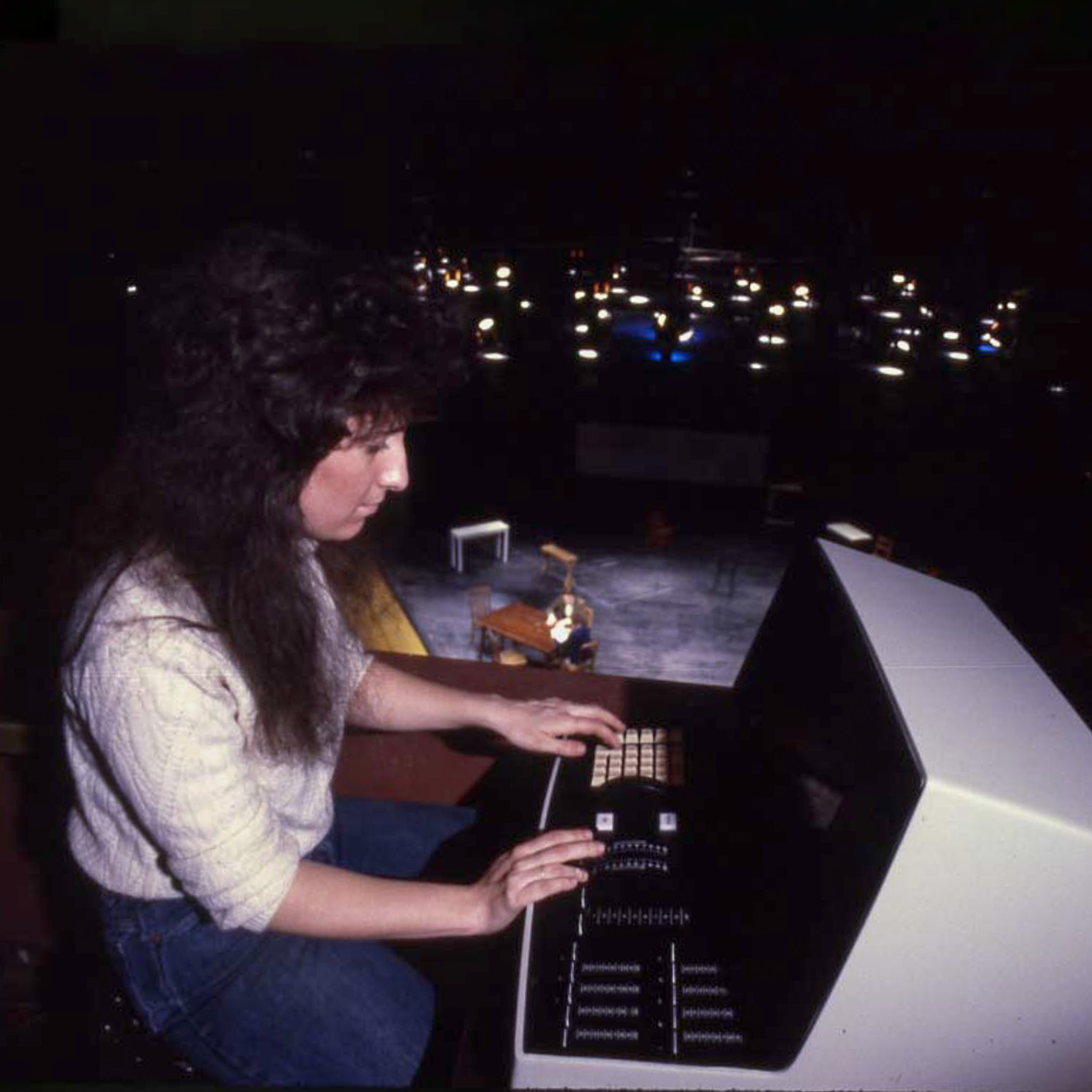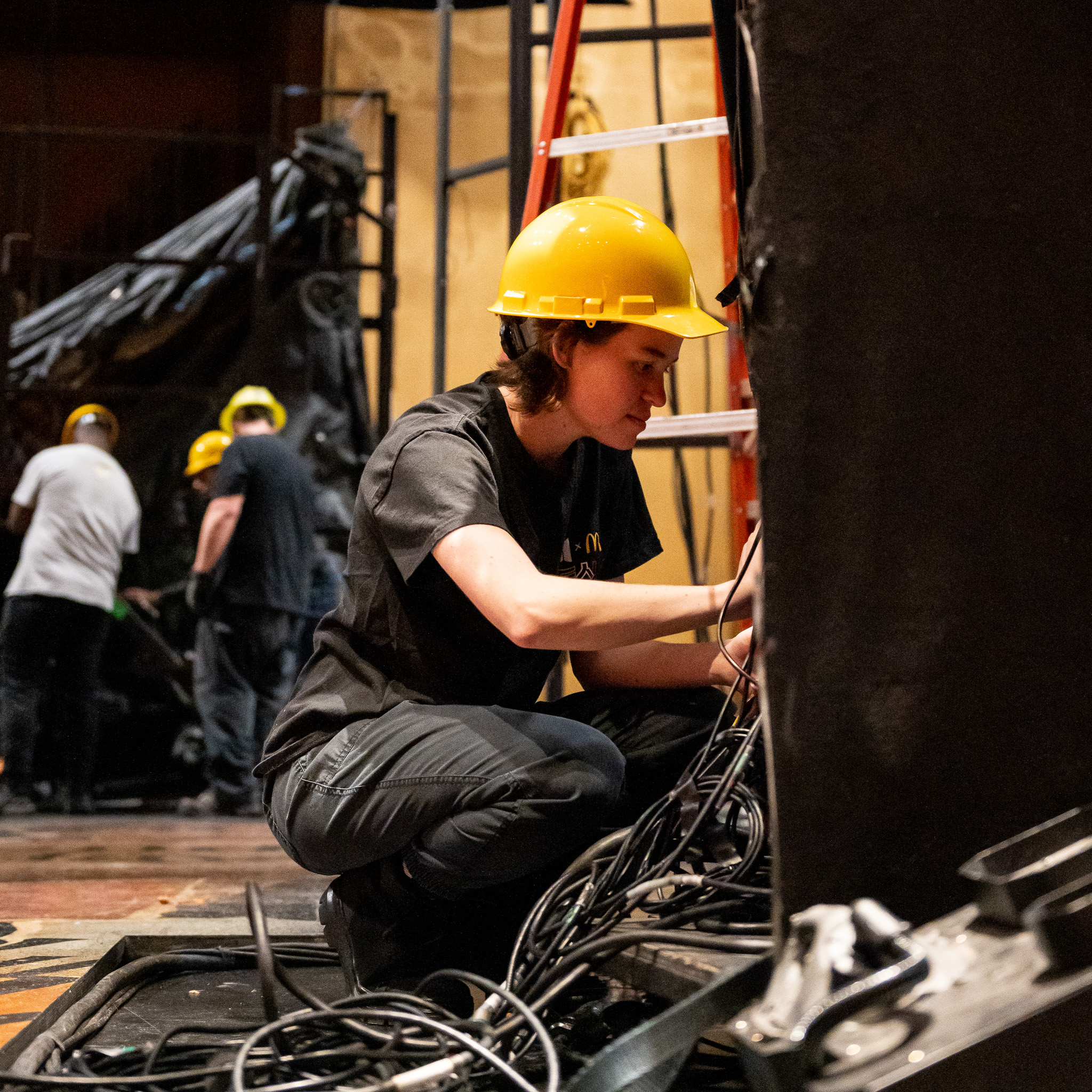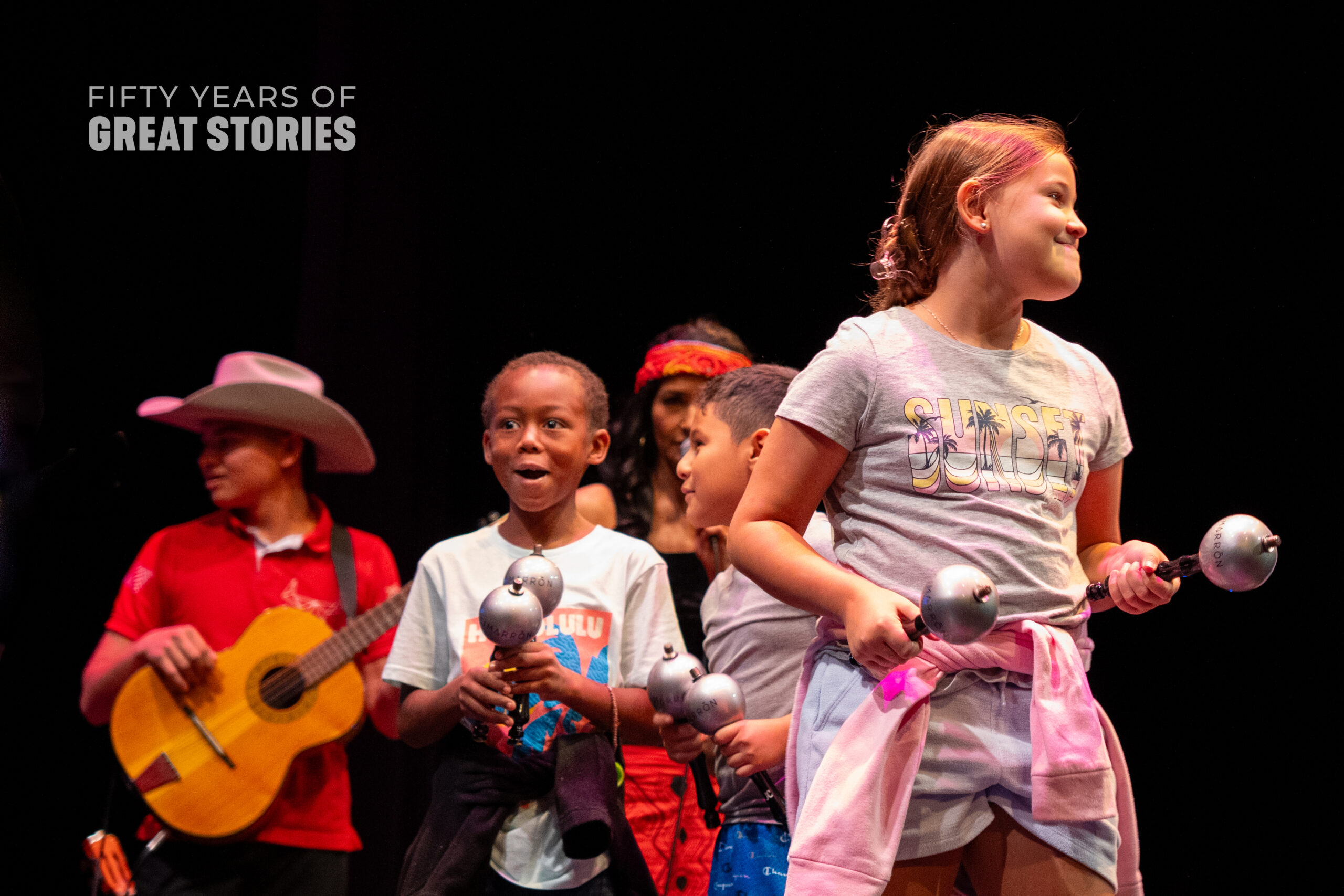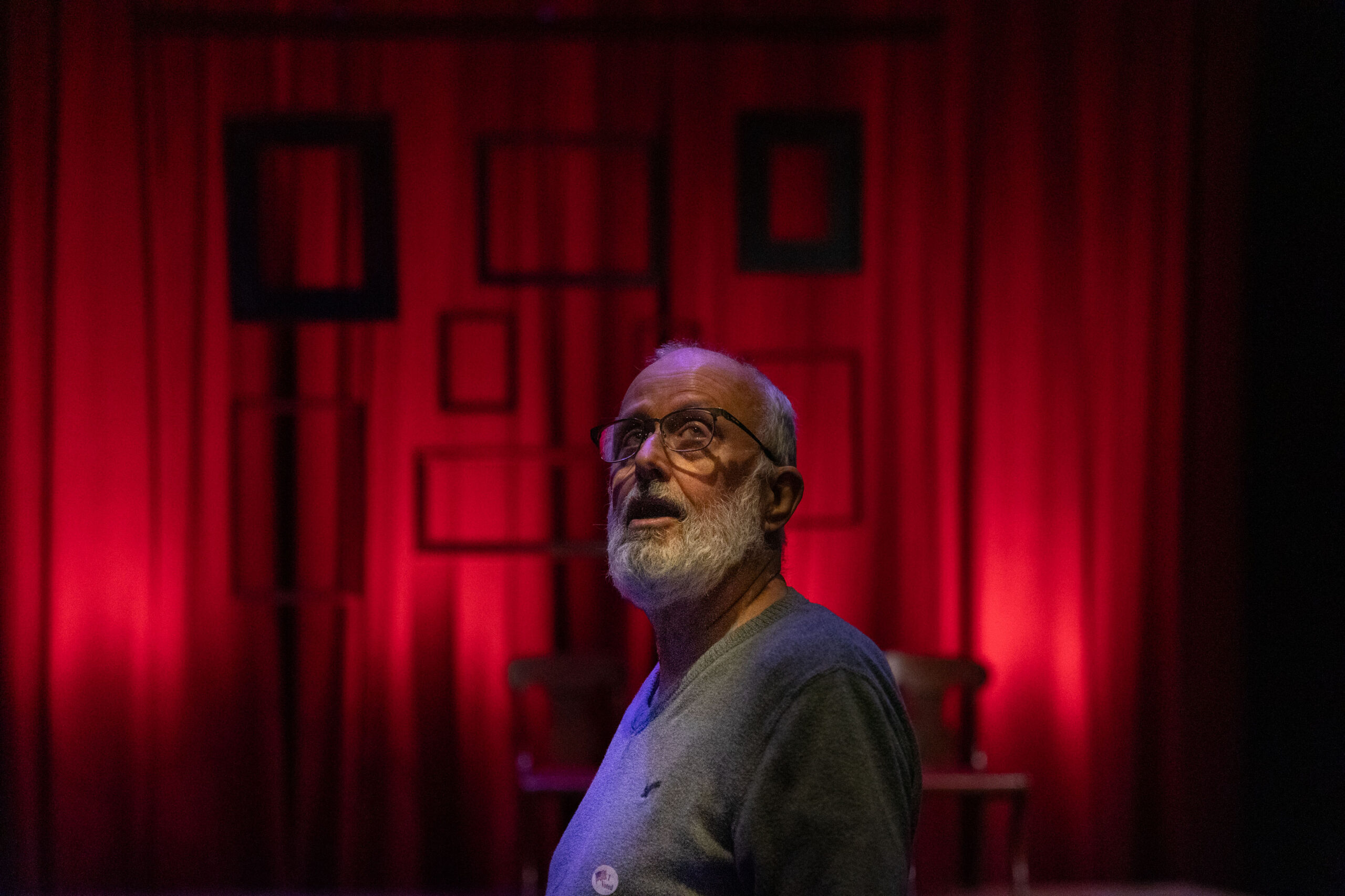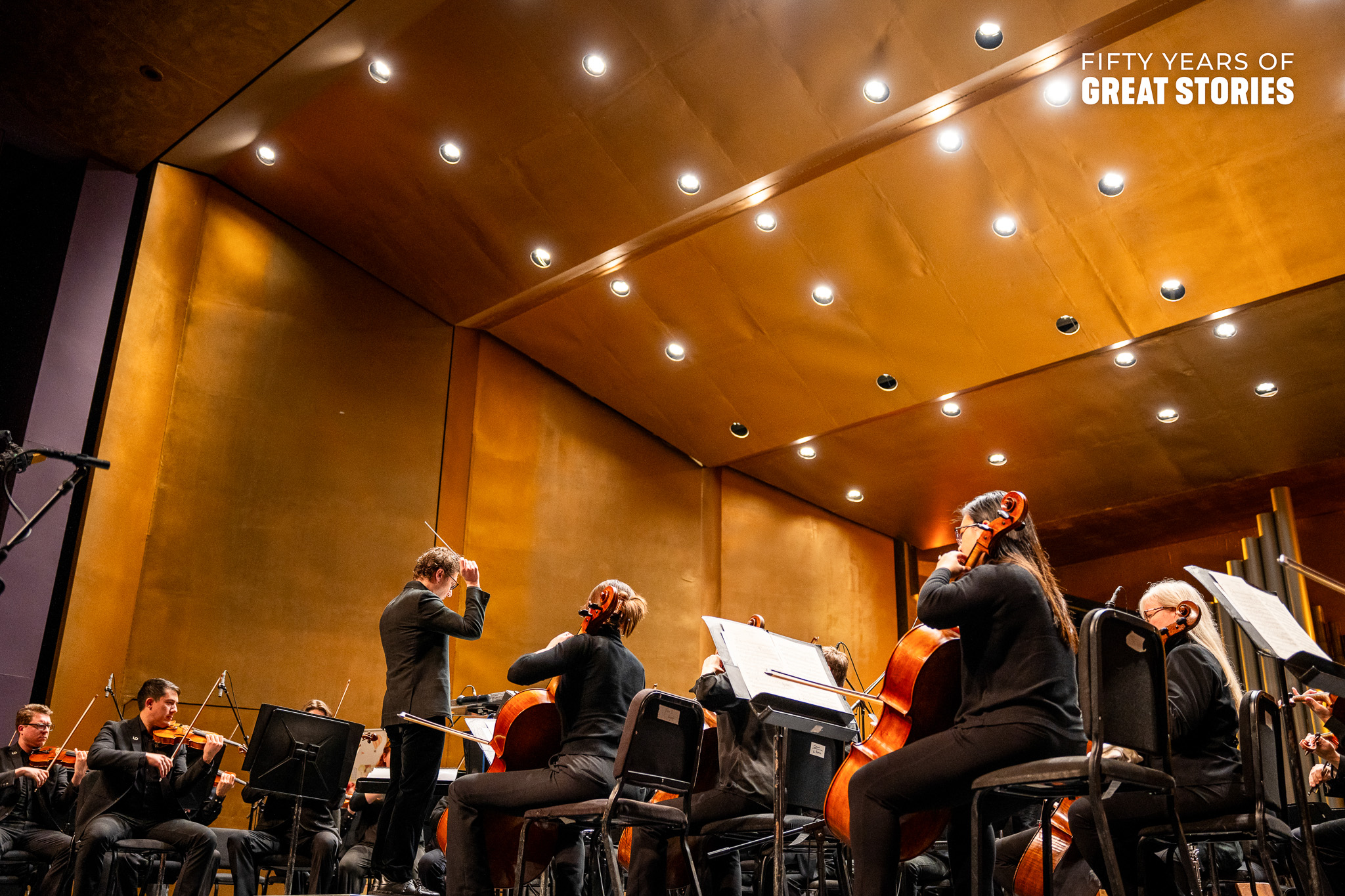Follow along as we celebrate our 50th Anniversary with 50 Years of Great Stories! These stories of impact are drawn from the past and present, told by our friends and neighbors to reflect the power of authentic connections and experiences.
Help make the Norton Center’s next 50 years even greater by donating today.
Shaping the Stage
You sit in a dimly lit Newlin Hall, listening to the rustling of programs and excited chatter all around you. The house lights go down until it is dark, and the anticipation buzzes throughout the entire crowd. As the first notes of music sing through the air, the curtain rises and the spotlight strikes the stage. The show begins, and it feels like you are a piece of something purely magical.
If you took a peek behind the scenes, however, you’d realize that you are witnessing the work of technical directors, stagehands, Centre College students and countless others, fine-tuning each technical detail to deliver an experience that really does feel like magic.
Backstage work has seen its fair share of change over the last 50 years, taking the Norton Center through significant technical upgrades and developments that have opened up new realms of accessibility and possibility. Other aspects – pieces of the Norton Center that have made it a unique, transformational environment since its inaugural year in 1973 – have remained constant.
Since the very first production ever staged at the Norton Center, Centre students have played an integral role in the backstage environment. In the summer of 1973, as the Norton Center was preparing to open its doors to the public for the first time, Centre students were already inside the building working alongside famed German set designer Reinhard Heinrich to create the set for Otello, which opened the Center’s first-ever season on September 22.
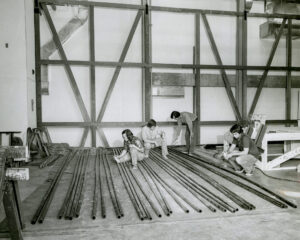
As the next 50 years propelled onward, each season saw new student workers alongside seasoned touring professionals, and all have had a hand in producing the biggest shows on the Norton Center stages.
Through this direct collaboration with production crews, students acquire real-life skills and knowledge from experts who have honed their craft in the industry; experience most theatre students wouldn’t have access to until graduating and entering the workforce.
It’s not just the students who benefit from their work. According to Michael Lavin, Norton Center Technical Director, students aren’t simply “allowed” to work on productions – they are absolutely vital.
“Without the students, we could not do Broadway,” said Lavin. “It’d be incredibly hard to get 50 stagehands down here, so the students are vital to the operation.”
Former Norton Center Technical Director Mark de Araujo has seen many of his students move on to big careers after graduation. He keeps up with them through social media, following along with their successes.
“The students really get to learn a lot in a professional environment,” said de Araujo. “A lot of them have gone on and had impressive careers in the theater world.
I had a former student who went on tour with Madonna as her pyrotechnician. Others moved on to work at places like the Kennedy Center or travel with Broadway productions.”
As computerized technology quickly progressed in the late 20th century, so did the world of theater tech. The Norton Center was no exception to the advances: over the last 50 years, numerous changes and updates have passed through the hands of technical directors and stagehands to keep the Center modernized. Sound systems were transformed to provide better sound quality to the audience and more control for the operators. Lighting systems were updated regularly as safer and diversified equipment became available.
“Digital technology transformed tech in theater for the better,” said de Araujo. “There’s more precision, better sound quality and just more options.”
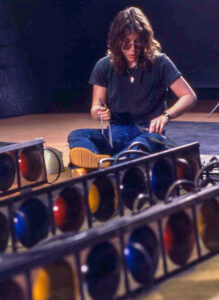
Currently, the entertainment lighting systems throughout Weisiger Theatre and Newlin Hall are experiencing an overhaul, a project that has been ongoing over the last few years. The updated system features new dimmers, which provide power to the lighting fixtures, updated electrical distribution, which offers safer and more efficient ways to run power, and low-voltage data distribution, which improves the security, reliability and speed of the lighting operations.
These updates offer more flexibility for the individuals and production teams working in each theatre, and make it easier for new students and visiting stagehands to work with the equipment without a significant learning curve.
With the Norton Center regularly hosting a variety of events – such as convocations, graduations and community events – that aren’t theater-specific, flexible and accessible backstage technology is a necessity.
Last fall, Kentucky School for the Deaf celebrated its 200th anniversary at the Norton Center with DeaFest – an event that required a unique setup and shifted the way Lavin viewed his typical workday. Over 2,500 deaf and hard-of-hearing individuals were in attendance.
“For all of us who are relatively able-bodied, it’s very interesting when you’re suddenly in the minority. It really helps change your way of thinking,” said Lavin. “I had to really think about the theater experience from a completely different point of view.”
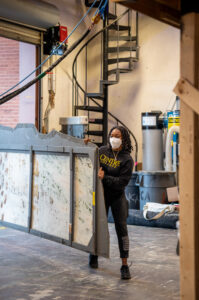
Additional signage, ASL interpreters and live captioners were assigned throughout the building, and on stage, extra subwoofers were added. Subwoofers, or subs, are dedicated to low-pitch sound frequencies. The vibrations coming from those subs allow deaf or hard-of-hearing individuals to experience audio and music through feeling.
The overall audience experience matters a lot to Lavin, whose work by design often goes unnoticed by those enjoying the Norton Center’s spaces.
“Even though I spend a lot of time on, say, lights, the audience doesn’t leave talking about the lights. They leave singing the songs and talking about the show. So, for me, it’s ‘how can I make this experience great for everybody?’” said Lavin.
Over the years, Lavin and his predecessors have been a part of hundreds of thousands of individuals’ experiences at the Norton Center, but recognition for his work isn’t the driving force behind Lavin’s job.
“There is something about seeing so many people happy. Seeing people clap, knowing that it was a really good show, hearing the chatter in the lobby…you know you were a part of giving them that feeling.”
